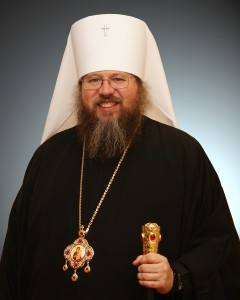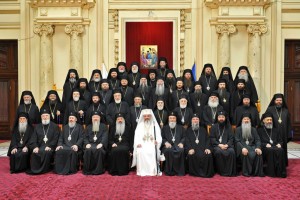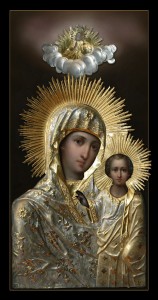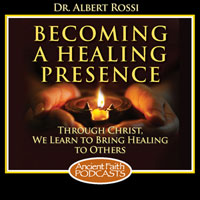5th Sunday after Pentecost
St. Paul’s Letter to the Romans 10:1-10
Are You Saved?
We hear in today’s reading the Letter of St. Paul to the Roman’s that it is Paul’s desire that his listeners be saved because they have the zeal for God, not just an obligation but a true zeal for God.
Those of us who come from, or have friends in, the Protestant Evangelical denominations often hear or have heard this question, are you saved? The question is asked because in that belief system there is a point in time when it actually happens.
Maybe the person came forward during an altar call whilst the congregation was singing the hymn made so familiar by the Billy Graham crusade, “I surrender all” and knelt at the rail and gave their life to Jesus. Before becoming Orthodox I was a member of a holiness church where I was saved, sanctified and washed in the blood of the lamb! Perhaps they were saved whilst at camp as a teenager and they gave their life to Christ after hearing a fire and brimstone sermon about how Jeee Sus gave all for you and how you will go to hell if you do not give your life to Jesus.
But what about we Orthodox? We do not sing about surrendering all, we do however have an altar call each and every Sunday. When I stand here in the Royal Doors, holding the chalice that contains the uncontainable and sing, approach in the fear of God with faith and with love. We are called to make a choice. We chose at that point to come forward and accept that which we believe or we make the choice to deny the healing power of the Eucharist and stay in our seats.
Metropolitan Kalistos Ware of Great Brittan tells a story of being on an air plane when the person he is sitting next to asks him if he is saved. He goes on to say, in his great British accent, that he sat there for a moment and pondered that question and then he said, no, I am being saved!
That’s the answer to the question, we are being saved.
As Orthodox Christians, we believe, that we were saved more than 2,000 years ago when God the Son took on human flesh and offered Himself as a perfect sacrifice for all of humanity. Not just those present at that moment but for all who came before and for all of us who would come after. By this action He defeated the power of sin and by His suffering on the Cross and his miraculous resurrection He destroyed death.
We are in the process of being saved daily through our intentional decisions to follow the example of Jesus in each and every situation that we find ourselves in. It is a daily task that we have to commit ourselves to each day in order to take on the discipline needed.
We do not view paradise as some far off some day destination but as the everyday experience of self-denial and of being filled through the Eucharist, obedience, and love for others with Christ.
And, Lord Have Mercy, we will be saved at the great and final judgment as we give an account of a lifetime of actions and in actions. What did we do when we saw the naked? Did we offer him clothes? When we saw the hungry did we offer food? When we saw the sick did we not visit them and so on as Jesus commands us to do? On that day, when it will become clear whether or not we cooperated with the grace that has been so generously poured upon us we will be held accountable.
Our individual salvation is being worked out in fear and trembling through the unique responsibility that God deems best to set before us. Are we doing all we can to live to Gospel message of loving God by loving our neighbor? Are we daily walking with God in our prayer? Can people tell that we are Christian, other worldly, by our actions, or like Judas do our actions betray Christ and all that has been done for us?
We should live our lives based upon that of the Publican from Scripture who beat his breast and begged for leniency. We should not judge another’s spiritual walk but we should focus on our own journey and on our own spiritual shortcomings, loving both friends and enemies, all of whom have been created in the image and likeness of God as living Icons of Christ Jesus.
Our ongoing testimony is presented through our actions of service in accord with Christ’s command to love God by showing true love for our neighbors and not just paying it lip service. It is easy to write a check but it is harder to roll up your sleeves and truly help your neighbor.
And finally we need to pray ceaselessly for the courage to fight the good fight, to stand up for what we believe in that world that chastises us for our beliefs, in a world that wants to redefine what tradition is because it is not politically correct to believe that we have a system of morals and standards that are not based on the latest political poll and what is in fashion, but on the more than 2,000 year tradition of the Holy Church. We need courage to stand up when we see our society going off the rails and shout with a loud voice that it is wrong. And we have to have the courage when we are persecuted for that very faith, and courage that we do not shrink away as the apostles did after Jesus was arrested in the garden to be led away for trial and crucifixion.
Do we have that true zeal that St. Paul is talking about in today’s reading? Are we living a life that is worthy of what has been done for us? Are we living our life in accord with the commandments of Jesus and the traditions of our Holy Church? Do we truly love and serve others, who are created in the image and likeness of God as living icons, or do we just pay it lip service and move on? These are the questions we need to ask ourselves each and every day.






